|
|
|
Sort Order |
|
|
|
Items / Page
|
|
|
|
|
|
|
| Srl | Item |
| 1 |
ID:
179668
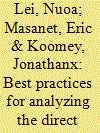

|
|
|
|
|
| Summary/Abstract |
There are a growing number of blockchain applications in energy systems, but surprisingly little is known about their direct energy demand outside of cryptocurrency applications. Addressing this knowledge gap should be a key policy priority so that the energy use of blockchain systems can be better understood and managed as applications proliferate. To help policy makers and energy analysts achieve this goal, this article makes three contributions. First, we present a brief review of blockchain system components, energy demand drivers, and emerging applications to provide a common conceptual foundation. Second, we propose best practices for energy analysis of blockchain systems and identify best practice lapses in previous literature that presently cloud our understanding of energy use. Finally, we propose priority research areas to address identified lapses and knowledge gaps, which would ensure future research produces data and estimates that are maximally relevant to energy policy decisions.
|
|
|
|
|
|
|
|
|
|
|
|
|
|
|
|
| 2 |
ID:
166433
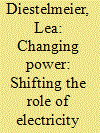

|
|
|
|
|
| Summary/Abstract |
One of the pressing legal questions of the energy transition is how to integrate “prosumers”, consumers who start producing electricity, in the electricity market. So far, their influence remains limited or fully absent because their role as independent market participants is barely or not facilitated as they are usually subject to regulated remuneration schemes. Blockchain technology offers changing the approach of “integration in the market” into “becoming the market” by enabling peer-to-peer transactions. Currently, transactions are facilitated by third parties, suppliers and system operators, whose main task is centrally compiling and coordinating information on loads and generation and contracting supply and distribution services. Instead, blockchain technology enables new ways of organising decentralised persons without the immediate need for one centrally connecting entity. This implies profound legal- and policy consequences. Based on information on first use cases of blockchain applications in the electricity sector, this article identifies those main policy implications for EU electricity law and thereby adds to the discussion how blockchain technology could facilitate “prosumers” to develop as independent market participants in the electricity sector from an energy law perspective.
|
|
|
|
|
|
|
|
|
|
|
|
|
|
|
|
| 3 |
ID:
180840
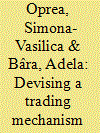

|
|
|
|
|
| Summary/Abstract |
The new potential of Distributed Energy Resources (DER), residential consumers, buildings, and prosumers in terms of controllable devices, self-generation, and storage makes them more active in the market encouraged by lower electricity prices. In addition, integrating a higher volume of volatile Renewable Energy Sources (RES) that unstress the public grid by local trading interactions is a desirable target of Local Electricity Markets (LEM). In this paper, we propose a blockchain trading mechanism to simulate the electricity transactions for 11 modern smart houses with more than 300 appliances, 8 roof- or faced-PV systems, and smart-metered 15-min readings that form a small-size community. The electricity generated at the community level lowers the electricity bills and brings benefits for prosumers (sellers) and consumers (buyers). Several trading mechanisms for LEM transactions including auctions such as Uniform Price (UP), Pay-As-Bid (PAB), Generalized Second-Price (GSP), Vickrey-Clark-Groves (VCG) methods are implemented to evaluate the benefits and show their efficiency. After the market is initially cleared, an adjustment coefficient of the price is proposed for both sides (seller and buyer) to enlarge the trading potential at the community level using blockchain technology. It proves to bring excellent results to the LEM participants and enhance trading with outstanding benefits.
|
|
|
|
|
|
|
|
|
|
|
|
|
|
|
|
| 4 |
ID:
162067
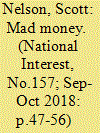

|
|
|
| 5 |
ID:
157682
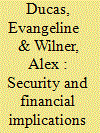

|
|
|
|
|
| Summary/Abstract |
Driven by advances in data analytics, machine learning, and smart devices, financial technology is changing the way Canadians interact with the financial sector. The evolving landscape is further influenced by cryptocurrencies: non-fiat, decentralized digital payment systems, like Bitcoin, that operate outside the formal financial sector. While Bitcoin has garnered attention for facilitating criminal activity, including money laundering, terrorism financing, digital ransomware, weapons trafficking, and tax evasion, it is Bitcoin's underlying protocol, the blockchain, that represents an innovation capable of transforming financial services and challenging existing security, financial, and public safety regulations and policies. Canada's challenge is to find the right balance between oversight and innovation. Our paper examines these competing interests: we provide an overview of blockchain technologies, illustrate their potential in Canada and abroad, and examine the government's role in fostering innovation while concurrently bolstering regulations, maintaining public safety, and securing the integrity of financial systems.
|
|
|
|
|
|
|
|
|
|
|
|
|
|
|
|
| 6 |
ID:
164603
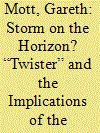

|
|
|
|
|
| Summary/Abstract |
“Twister,” developed by Miguel Freitas, is a social network platform centered around micro-blogging, much like Twitter. However, rather than relying on centralized servers owned and maintained by a single firm, Twister users operate a blockchain combined with distributed hash table (DHT)–like and BitTorrent-like protocols to both make posts and send private messages, and also to receive entries from other users. Twister’s raison d’etre is that it offers a social networking platform that cannot be censored and cannot itself censor. The software does not record the Internet Protocol addresses users use to access the service, nor does it notify other users of an account’s online/offline status. Growing adoption of blockchain services means that it is possible that the concept of decentralized social networks could become a norm. It is suggested in this article that blockchain-based peer-to-peer social networks present challenges to the current counterextremist practices for content removal and censorship. While there are methods to disrupt usage of blockchain-based peer-to-peer services, these approaches may have the net harm of curtailing bona fide use of legal and novel technologies. Given this opportunity cost, non-transitory online violent extremist content may need to be tolerated.
|
|
|
|
|
|
|
|
|
|
|
|
|
|
|
|
| 7 |
ID:
153136


|
|
|
|
|
| Summary/Abstract |
Just like its recent predecessors, blockchain – also known as the distributed ledger technology – is considered to have the potential to cause major economic, political and social transformations in the Global South. The visible effects of this technology are already being noted there. We present early evidence linking the use of blockchain in overcoming some economic, social and political challenges facing the Global South. The article highlights the key applications and uses of blockchain in developing countries. It demonstrates how blockchain can help promote transparency, build trust and reputation, and enhance efficiency in transactions. The article looks at opportunities and key triggers for blockchain diffusion in these countries. It also delves into challenges and obstacles that developing economies are likely to encounter in the use of blockchain.
|
|
|
|
|
|
|
|
|
|
|
|
|
|
|
|
|
|
|
|
|